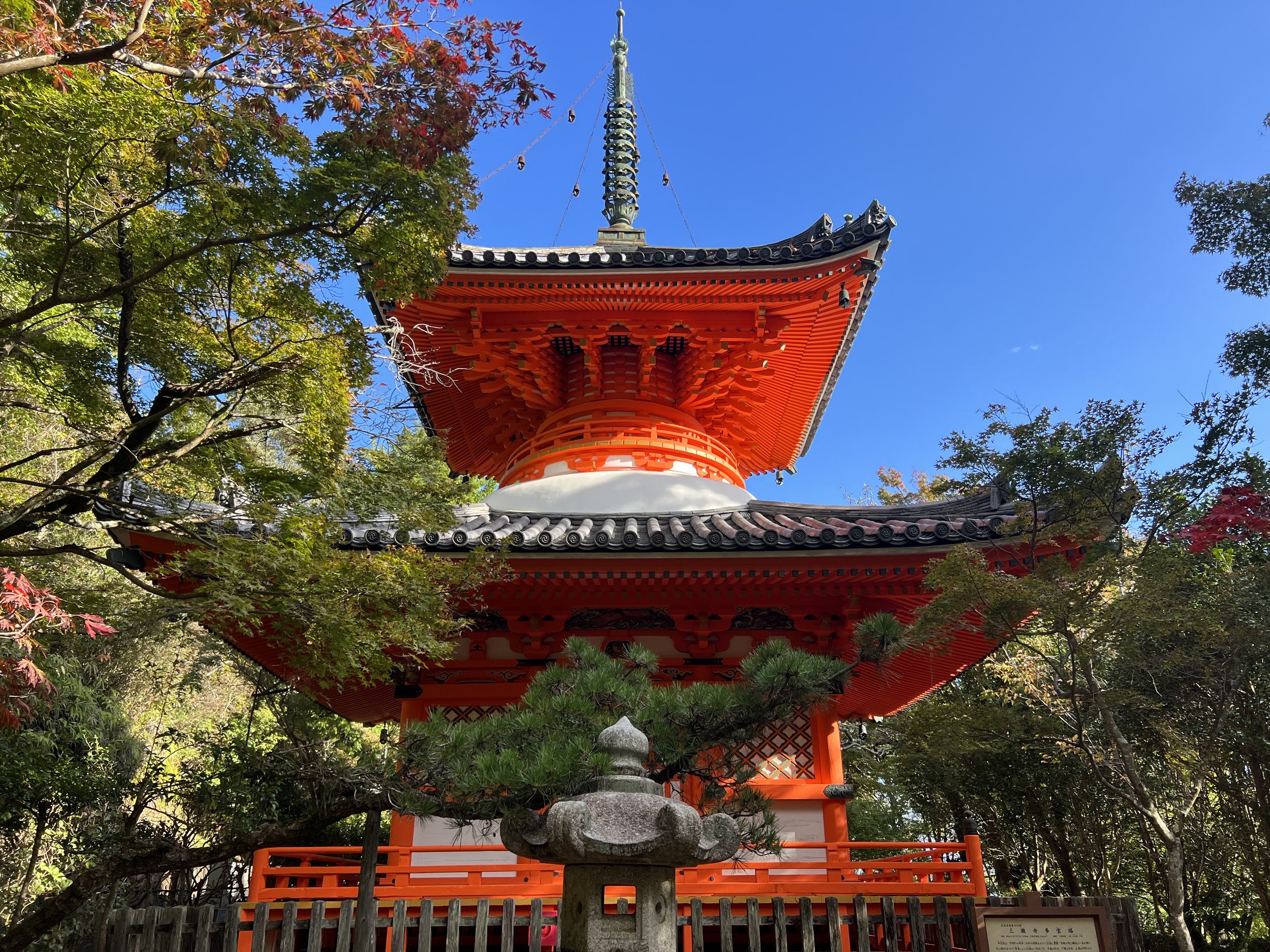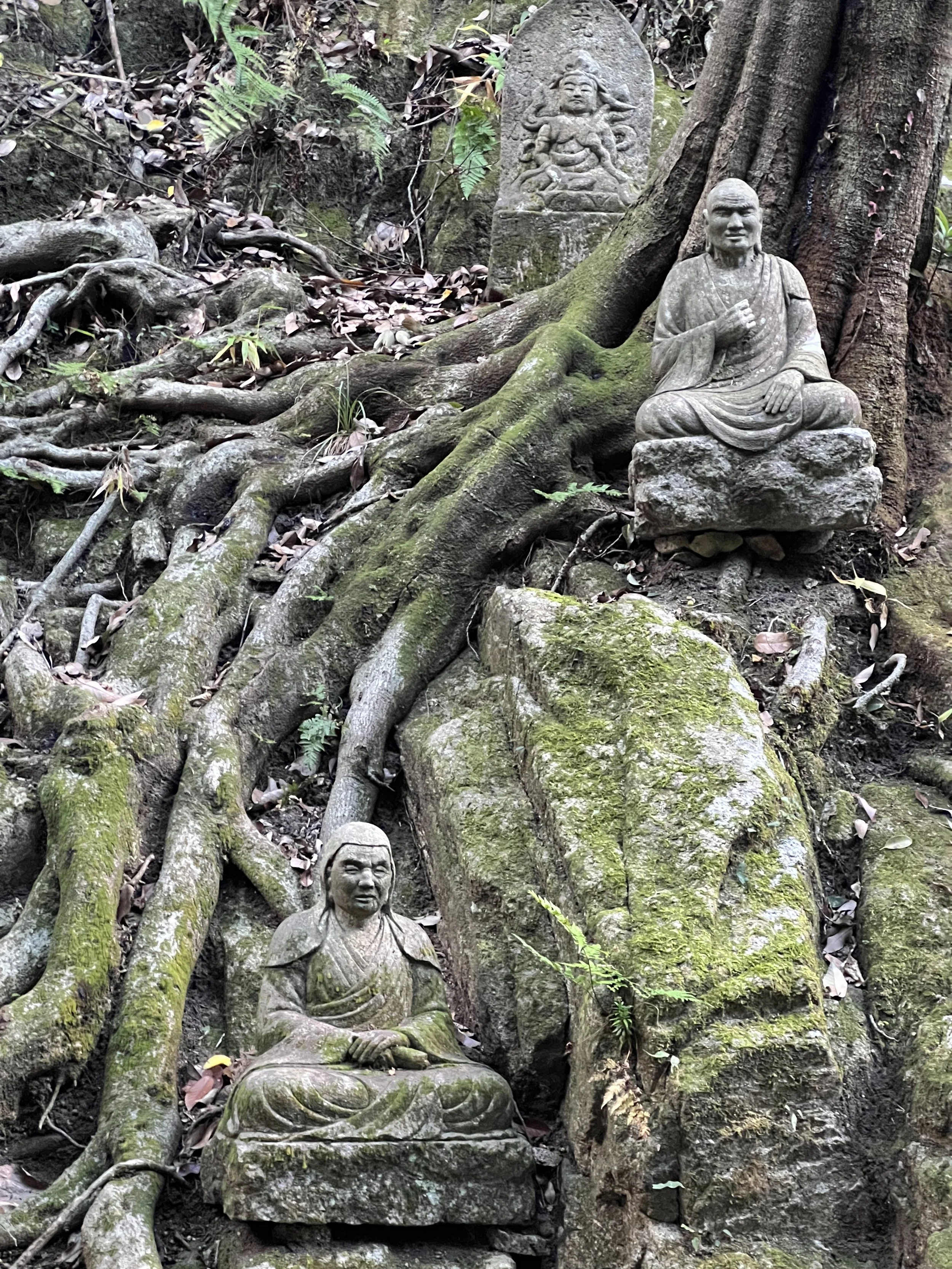Mitaki-dera, a Hidden Gem in Hiroshima for Temple Lovers
As a lover of temples and shrines and having been to Hiroshima three times, I was keen to discover some lesser-known places, and decided to visit Mitaki-dera (三瀧寺), a quiet temple complex in the north-west of Hiroshima. The temple is named after the three waterfalls located on its grounds. Particularly beautiful in autumn and spring, this atmospheric temple nestling on the forested slopes of Mount Mitaki is an ideal nature getaway from Hiroshima.
Founded in 809, Mitaki-dera is part of the Shingon school of Buddhism and is dedicated to Kannon, the Goddess of Mercy. The temple has a special connection with the tragic history of the Hiroshima bombings. The two-storey vermilion pagoda located near the entrance was moved from Wakayama in 1951 to serve as a memorial to the victims of the atomic bombing. Moreover, the water from the three waterfalls is donated each year by participants in the Hiroshima Peace Memorial Ceremony.
I spent a couple of hours exploring Mitaki-dera and was deeply touched by the serenity and beauty of this place. I hope those feelings translate into this article.
A Glimpse of Mitaki-dera in a Few Photos
The entrance to Mitaki-dera is located at the foot of a mountain, about 15 minutes from Mitaki station, the nearest railway station. You can start to see the first stone statues near the car park, and follow the stone path to the temple. Visiting the temple is free, but there is a donation box near the entrance with a sign indicating the recommended donation amount (¥200, if I remember correctly).
One of the first sights at Mitaki-dera is its two-storey pagoda surrounded by maple trees. When I visited in mid-October, it was still too early for autumn foliage. But I could imagine what this place would become at the height of autumn, when the pagoda would be surrounded by shades of orange and red.
I spent much more time than planned wandering around the quiet, enchanting temple complex, admiring the countless stone steles and statues. I particularly liked the Mitaki-dera’s Jizo statues, protectors of women, children and travellers, often wearing bright red bonnets and covered in moss.
I think I met less than ten people in the time I spent exploring the temple. I lost track of time as I relaxed in the surrounding calm, marked only by the soothing sound of birds and water echoing from the cascades.
In the main hall of the temple, I was particularly struck by a wooden statue unlike any I'd seen before. It represents a threatening character protecting from evil spirits.
A short but steep path leads to the trailhead of Mount Mitaki. From here, you can start to see a fine view of Hiroshima, albeit partially obstructed by trees. For a better view, you can continue your hike to Mount Mitaki’s summit at 356m high (I haven’t done it myself).
Temple Access & Information
How to Get to Mitaki-dera?
From Hiroshima, there are two options to reach Mitaki-dera:
Train: Take a local train on the JR Kabe line and stop at Mitaki station (the journey costs ¥190; trains leave every 20 minutes), then walk 15 minutes uphill to the temple entrance (900 metres).
Bus: Take bus 22 (every hour) to the Seiganji-mae stop, and walk 7 minutes to the temple entrance.
When to Visit Mitaki-dera?
Mitaki-dera is open every day from 8am to 5pm. I would recommend 1h30-2h to explore the temple complex at a leisurely pace.
Mitaki-dera is particularly popular during the koyo (autumn) season (mid-November to mid-December), when you can explore the temple surrounded by autumn colours.
To Conclude
Mitaki-dera is a hidden gem near Hiroshima recommended for those looking for a quiet and atmospheric place in Japan. After spending a few hours there, I felt deeply relaxed as I enjoyed the serene atmosphere. I love places like this. I hope to share more of them with you in the future.
Found this article helpful? Buy me a coffee. 😊
Want to stay in touch? Subscribe to my monthly newsletter (with latest articles, updates, travel tips and more...) delivered straight to your inbox. 📩














